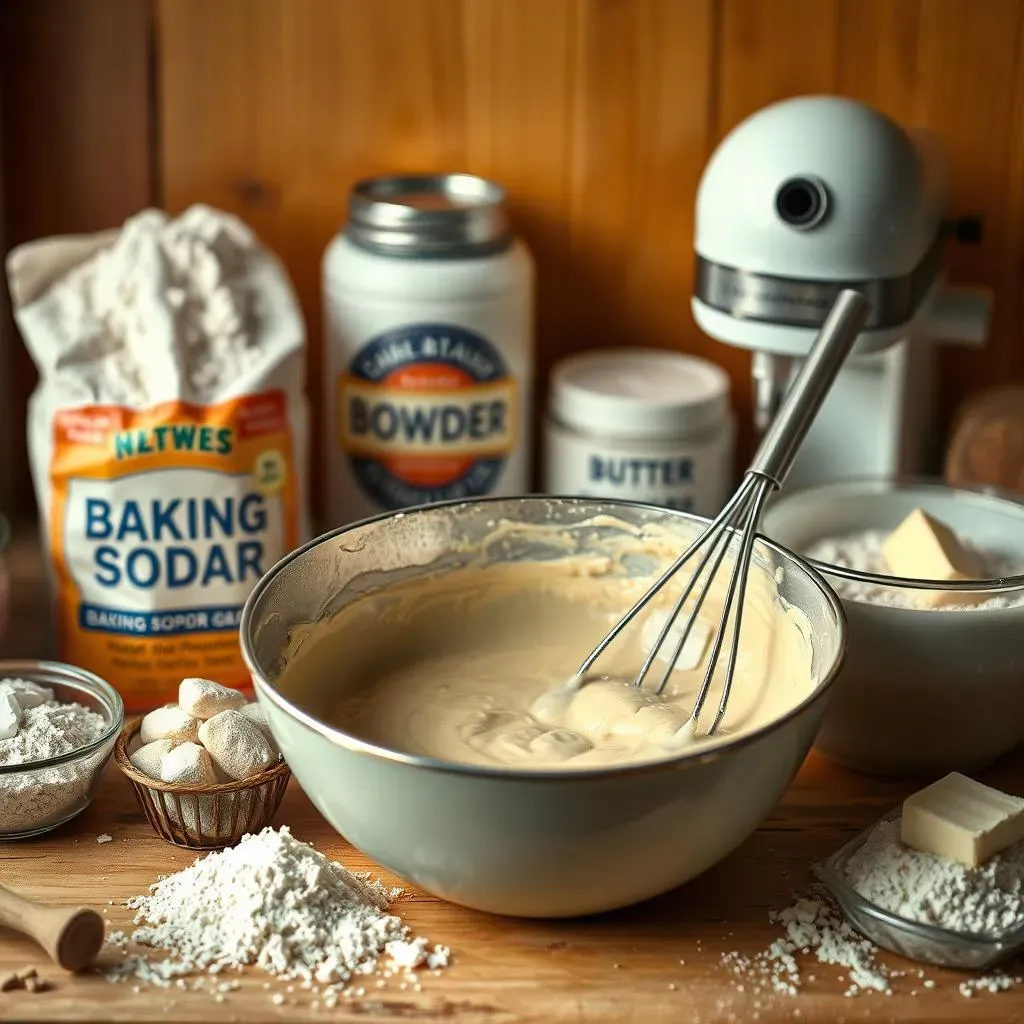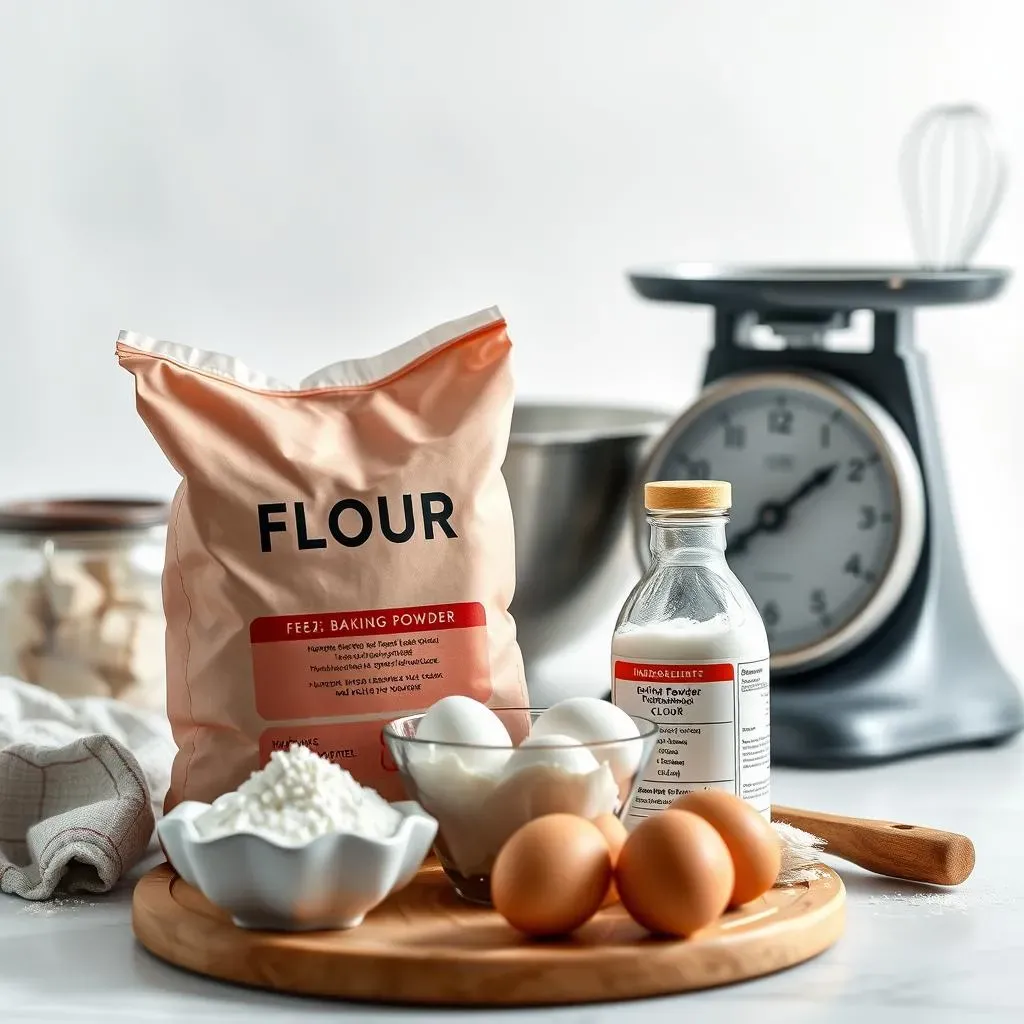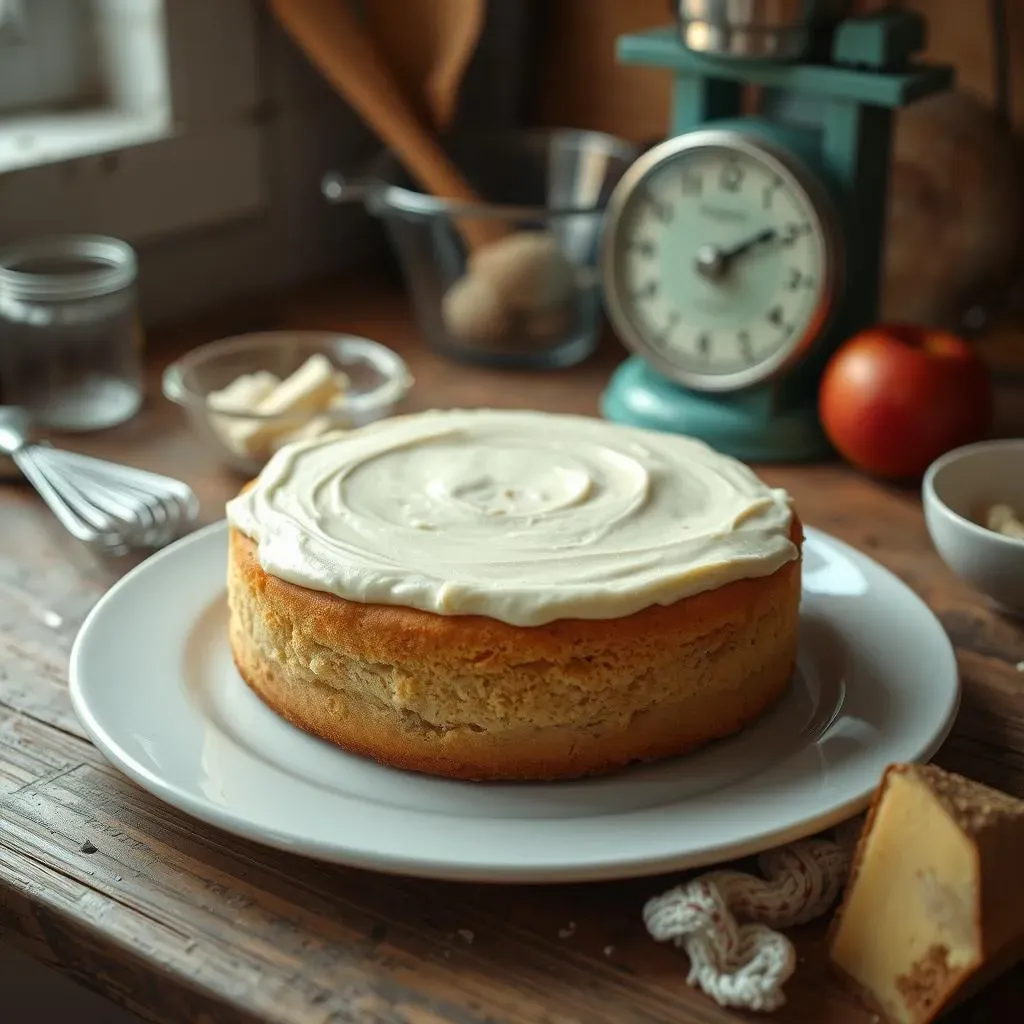Table of Contents
Ever pulled a cake from the oven, expecting a fluffy masterpiece, only to find a flat, dense disappointment? The age-old question, "why cakes don't rise," plagues even experienced bakers. It's frustrating, isn't it? But don't despair! This article is your ultimate guide to understanding and conquering those pesky cake-rising problems. We'll unravel the mysteries behind those sunken centers and collapsed layers, exploring the science of leavening and the crucial role of ingredients. From the subtle nuances of baking powder and soda to the temperature of your oven and the precision of your mixing, we'll cover it all. We'll even delve into common ingredient issues, such as using expired baking powder or incorrectly measuring flour. Prepare to become a cake-rising expert, equipped with the knowledge and troubleshooting techniques to bake consistently perfect cakes every single time. Let's get started and unlock the secrets to achieving the light and airy cakes you've always dreamed of! So, if you're ready to conquer the question of why cakes don't rise, read on!
The Leavening Lowdown: Baking Powder, Soda, and More
The Leavening Lowdown: Baking Powder, Soda, and More
Understanding Baking Powder
Baking powder is your go-to for most cakes. It's a complete leavening agent, meaning it contains both an acid and a base. When you add it to wet ingredients, a chemical reaction happens, creating carbon dioxide bubbles that make your cake rise. Think of it like tiny balloons inflating inside your batter! Different baking powders have varying strengths, so always check the recipe's recommendation. Using the wrong type can lead to a flat cake or an overly "chemical" taste. Many recipes call for double-acting baking powder, which releases gas in two stages: once when mixed into the batter and again during baking. This gives you a nice, even rise.
It's super important to check the expiration date on your baking powder! Old baking powder loses its oomph, and your cake will suffer the consequences. If you're trying to make a keto cake, you might want to check out some keto cake recipes to see if they use baking powder. If your recipe calls for a specific type of baking powder, stick to it. Substituting without understanding the implications can be a recipe for disaster (literally!).
Baking Powder Type | Description |
|---|---|
Single-acting | Releases gas only upon mixing |
Double-acting | Releases gas upon mixing and during baking |
The Role of Baking Soda
Baking soda, unlike baking powder, is just a base. It needs an acid to react and create those essential carbon dioxide bubbles. That's why you often see it paired with acidic ingredients like buttermilk, lemon juice, or brown sugar in recipes. The reaction between the base (baking soda) and the acid creates the lift. If you don't have enough acid, your baking soda won't activate properly, resulting in a flat cake. It's a delicate dance of chemistry, really.
Sometimes, recipes use both baking soda and baking powder! This is often done to give the cake a more robust rise. The baking powder provides a consistent lift, while the baking soda adds an extra boost depending on the acidity of the other ingredients. If you're a fan of keto baking, you'll find that many recipes use a combination of both. Remember, always follow your recipe carefully. Improvising with leavening agents is a risky game!
- Always check expiration dates on both baking powder and soda.
- Understand the role of acids in activating baking soda.
- Don't substitute baking powder and soda without understanding the consequences.
Beyond Leavening: Temperature Troubles and Mixing Mistakes
Beyond Leavening: Temperature Troubles and Mixing Mistakes
Oven Temperature: The Goldilocks Zone
Your oven temperature is crucial. Too hot, and the outside of your cake will set before the inside has a chance to rise, resulting in a dense, possibly burnt exterior and a gooey interior. Think of it like trying to blow up a balloon while holding it too close to a flame – it’ll pop before it's fully inflated! Too cool, and your cake might rise too slowly, not developing enough volume before setting.
Always use an oven thermometer to ensure accuracy. Ovens can be notoriously unreliable, often varying by as much as 25 degrees from the set temperature. A proper thermometer gives you peace of mind. If you're baking a keto zucchini cake, precise temperature control is even more critical. Check out this resource on storing cakes properly once they're baked.
Temperature | Effect on Cake |
|---|---|
Too Hot | Exterior sets too quickly, interior remains underbaked |
Too Cold | Slow rise, insufficient volume |
Just Right | Even rise, light and fluffy texture |
Mixing Matters: Gentle Handling
Overmixing is a common culprit behind flat cakes. Overmixing develops too much gluten, which creates a tough, dense structure that resists the expansion of the leavening agents. Imagine trying to inflate a balloon made of thick rubber – it's much harder than inflating one made of thin material!
Mix only until the ingredients are just combined. Once the dry and wet ingredients are incorporated, stop! Many recipes for simple keto cakes emphasize this gentle approach. Overmixing is especially detrimental to cakes that rely on whipped egg whites for their lift, as it can deflate the air incorporated during whisking. Proper mixing techniques are key to success.
- Mix until just combined; avoid overmixing.
- Use a gentle hand when folding in delicate ingredients.
- Don't over-cream butter and sugar; aim for fluffy, but not overly aerated.
Ingredient Issues: The Importance of Freshness and Measurement
Ingredient Issues: The Importance of Freshness and Measurement
Ingredient Freshness: The Secret Weapon
Using fresh ingredients is like adding a secret ingredient to your baking—it's the key to success! Old baking powder loses its power, resulting in a flat cake. Similarly, stale flour can absorb moisture, affecting the texture and rise of your cake. Even your eggs play a role; room temperature eggs incorporate air more effectively than cold ones. This is crucial for achieving a light and airy texture. Think of it like this: room temperature ingredients are like happy, bouncy friends ready to party and rise together. Cold ones are grumpy and need some time to warm up!
Always check expiration dates on your baking powder and soda. Expired leavening agents are a major culprit behind flat cakes. If you're experimenting with different types of flour, be sure to understand how each one impacts the final result. For instance, cake flour is known for its low protein content, which results in a tender crumb. If you're baking a keto-friendly cake, you might need to adjust your recipe accordingly. Understanding the properties of your ingredients is half the battle!
- Check expiration dates on all baking ingredients.
- Use room temperature eggs for optimal volume.
- Understand the impact of different types of flour.
Precise Measurements: The Baking Police
Baking is a precise science, not a guesswork game! Accurate measurements are essential for a successful cake. Using a kitchen scale is the best way to ensure accuracy, especially when dealing with leavening agents. A slight difference in the amount of baking powder or soda can significantly impact the final result. Using measuring cups and spoons can lead to inconsistencies, which can ruin your cake. It’s like trying to build a house with mismatched bricks; it simply won't stand!
For keto baking, precise measurements are even more critical. Many keto recipes use alternative sweeteners and flours that behave differently than traditional ingredients. A small error in measurement can significantly alter the texture and sweetness of your keto cake. Consider investing in a good kitchen scale; it will make a world of difference. If you're unsure about measurements, always consult a reliable recipe and follow it carefully.
Ingredient | Measurement Method | Why it Matters |
|---|---|---|
Leavening agents | Kitchen scale (grams) | Even rise, consistent results |
Flour | Kitchen scale (grams), spoon and level | Correct texture, avoids overly dense cake |
Liquids | Measuring cups | Correct batter consistency |
Troubleshooting Techniques: Fixing Flat Cakes and Preventing Future Fails
Troubleshooting Techniques: Fixing Flat Cakes and Preventing Future Fails
Fixing a Flat Cake: Damage Control
So, your cake is flatter than a pancake. Don't panic! Sometimes, even with perfect technique, things go wrong. A slightly sunken center isn't the end of the world. It might be salvageable! If the cake is otherwise moist and delicious, you can often disguise a slightly sunken center with frosting or ganache. A thick layer of frosting can even things out, and no one will be the wiser. If the cake is dry, however, it's probably a lost cause. You can always try to repurpose it into something else, like cake pops or crumbs for a crumble topping. It's not ideal, but you can still rescue some of the situation.
Remember, even professional bakers have occasional flops. The important thing is to learn from your mistakes. Analyze what might have gone wrong. Did you use old leavening agents? Was your oven temperature off? Did you overmix the batter? Next time, pay extra attention to those areas. If you're baking a keto zucchini cake, the moisture content of the zucchini can affect the rise, so make sure to squeeze out excess liquid. And always check your recipe carefully. Sometimes, a seemingly minor detail can make a huge difference.
- Assess the damage: Is the cake dry or just sunken?
- Frosting or ganache can hide minor imperfections.
- Repurpose dry cakes into other desserts.
Preventing Future Failures: Proactive Baking
Preventing flat cakes is all about consistency and attention to detail. Start by investing in a good oven thermometer to ensure your oven is at the correct temperature. This is especially important when baking delicate cakes. Next, master the art of measuring ingredients accurately. A kitchen scale is your best friend here. It’s the only way to ensure you’re using the right amount of leavening agents and other critical ingredients, such as flour. Remember, even a slight variation can make a difference. A little extra flour can make a cake dense, while too little can result in a crumbly one.
Finally, pay close attention to your mixing technique. Overmixing is a common mistake that leads to tough, dense cakes. Mix until the ingredients are just combined; then stop! Consider using a stand mixer with a paddle attachment for even mixing. If you're using a hand mixer, be gentle and don’t overwork the batter. If you're looking for simple recipes, try searching for “3-ingredient keto cakes” – these often have less room for error. Remember, baking is a science, and understanding the science is key to success. Happy baking!
Step | Action | Why it Matters |
|---|---|---|
1 | Use an oven thermometer | Accurate temperature control |
2 | Measure ingredients accurately | Consistent results |
3 | Mix until just combined | Avoids overmixing |
